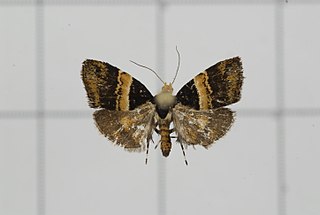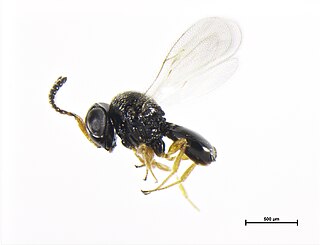
The decidua is the modified mucosal lining of the uterus that forms every month, in preparation for pregnancy. It is shed off each month when there is no fertilised egg to support. The decidua is under the influence of progesterone. Endometrial cells become highly characteristic. The decidua forms the maternal part of the placenta and remains for the duration of the pregnancy. After birth the decidua is shed together with the placenta.

Part of the human brain, the basal forebrain structures are located in the forebrain to the front of and below the striatum. They include the ventral basal ganglia, nucleus basalis, diagonal band of Broca, substantia innominata, and the medial septal nucleus. These structures are important in the production of acetylcholine, which is then distributed widely throughout the brain. The basal forebrain is considered to be the major cholinergic output of the central nervous system (CNS) centred on the output of the nucleus basalis. The presence of non-cholinergic neurons projecting to the cortex have been found to act with the cholinergic neurons to dynamically modulate activity in the cortex.

Horsfield's bronze cuckoo is a small cuckoo in the family Cuculidae. Its size averages 22g and is distinguished by its green and bronze iridescent colouring on its back and incomplete brown barring from neck to tail. Horsfield's bronze cuckoo can be destiguished from other bronze cuckoos by its white eyebrow and brown eye stripe. The Horsfield's bronze cuckoo is common throughout Australia preferring the drier open woodlands away from forested areas.

Coreopsis basalis, commonly known as the goldenmane tickseed, is a North American plant species in the sunflower family. It is native to the southeastern and south-central United States from Texas to the Carolinas. Isolated populations have been reported from Connecticut, Illinois, and California.

Rhombodera basalis known as Malaysian shield mantis, is a species of praying mantis of the genus Rhombodera.
Euxesta basalis is a species of ulidiid or picture-winged fly in the genus Euxesta of the family Ulidiidae. It was described by Francis Walker in 1853.

Milionia basalis is a moth of the family Geometridae first described by Francis Walker in 1854. It is found in Japan, the north-eastern parts of the Himalayas, Myanmar and Sundaland.

Choreutis basalis is a species of moth of the family Choreutidae. It is found in eastern Queensland, from Cape York to Yeppoon. It is also present in New Guinea and Indonesia.

In the human brain, the nucleus basalis, also known as the nucleus basalis of Meynert or nucleus basalis magnocellularis, is a group of neurons located mainly in the substantia innominata of the basal forebrain. Most neurons of the nucleus basalis are rich in the neurotransmitter acetylcholine, and they have widespread projections to the neocortex and other brain structures.

Frea basalis is a species of beetle in the family Cerambycidae. It was described by Karl Jordan in 1894. It is known from Cameroon, Angola, and the Democratic Republic of the Congo.
Cirrhicera championi is a species of beetle in the family Cerambycidae. It was described by Bates in 1881, and it is found in Costa Rica and Mexico.
Cirrhicera cinereola is a species of beetle in the family Cerambycidae. It was described by Bates in 1881. It is known from Mexico and Costa Rica.
Cirrhicera cristipennis is a species of beetle in the family Cerambycidae. It was described by Henry Walter Bates in 1881. It is known from Costa Rica, Mexico, Guatemala and Ecuador.
Cirrhicera panamensis is a species of beetle in the family Cerambycidae. It was described by Bates in 1881. It is known from Costa Rica and Panama.
Cirrhicera leuconota is a species of beetle in the family Cerambycidae. It was described by Laporte in 1840. It is known from Mexico and Honduras.
Cirrhicera nigrina is a species of beetle in the family Cerambycidae. It was described by Thomson in 1857. It is known from Mexico.
Cirrhicera niveosignata is a species of beetle in the family Cerambycidae. It was described by Thomson in 1860. It is known from Mexico.
Nupserha basalis is a species of beetle in the family Cerambycidae. It was described by Wilhelm Ferdinand Erichson in 1843. It has a wide distribution in Africa.
Aradus basalis is a species of flat bug in the family Aradidae. It is found in North America.

Trissolcus basalis, or the green vegetable bug egg parasitoid, is a parasitoid wasp in the family Platygastridae known primarily for parasitising the horticultural pest Nezara viridula, the green vegetable bug.









